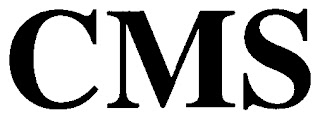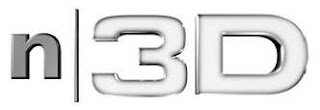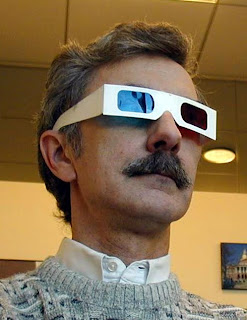TTABlog Quarterly Index: July - September 2012
E-mail subscriptions to the TTABlog are available. Just enter your e-mail address in the box on the right to receive a daily update via Feedblitz. You may also follow the blog on Twitter (here). And don't forget to leave your comments! [Note that E-mail subscribers must go to the blog to see comments]. Finally, please report any broken or inoperative links, as well as any errors and omissions, to the TTABlogger at jwelch at lalaw.com.

Section 2(a) - Deceptiveness:
- Test Your TTAB Judge-Ability: Are "ADMIRAL RODNEY" and "ADMIRAL NELSON'S" Confusingly Similar for Rum?
- Precedential No. 25: TTAB Finds "α CU" (Alpha CU) Deceptive for Copper-less Dietary Supplements
Section 2(a) - False Association:
- TTAB Sustains Section 2(a) False Association Opposition to "FRANKS ANATRA" for Catering Services
- Ron Coleman Comments on the TTAB''s "BENNY GOODMAN" False Association Decision
- Precedential No. 23: TTAB Affirms 2(a) False Connection Refusal of BENNY GOODMAN COLLECTION
Section 2(d) - Likelihood of Confusion:
- TTAB Reverses 2(d) Refusal of "PERFUME PARIS & Design" Over "PARIS PERFUMES & Design"
- TTAB Affirms 2(d) Refusal:"THE HURRICANE CLUB" Confusable With "HURRICANE GRILL & WINGS"
- Test Your TTAB Judge-Ability: Are These Automobile Design Marks Confusingly Similar?
- TTAB Dismisses VIRGIN Opposition to VIRGIN FARMS for Agricultural Seeds
- COLONY Confusingly Similar to COLONY MEMBER ARGO GROUP & DESIGN, Says TTAB, Affirmingly
- Test Your TTAB Judge-Ability on these Five Section 2(d) Appeals
- Test Your TTAB Judge-Ability: Are Wine and Sauces Related Goods?
- E. D. Va. District Court Affirms TTAB Dismissal of SWATCH Opposition versus SWAP
- TTAB Affirms 2(d) Refusal: "MY BIG FAT GREEK WINE" Confusingly Similar to "MY BIG FAT GREEK RESTAURANT"
- TTAB Affirms Two of Three PHILADELPHIA'S CHEESESTEAK Refusals to Register
- TTAB Affirms 2(d) Refusal of "MaxCL" for Life Insurance, Finds Confusing Similarity to "MAX" for Property/Casualty Insurance
- "VALENTINO RUDY" Confusingly Similar to "VALENTINO" for Clothing, Says TTAB
- Despite Sophisticated Purchasers, TTAB Finds PREVAIL Confusingly Similar to PEEK PREVAIL for Medical Implants
- http://www.thettablog.blogspot.com/2012/07/finding-corvus-and-corvo-confusingly.html
- Test Your TTAB Judge-Ability: Which One of these Section 2(d) Refusals Was Reversed?
- Test Your TTAB Judge-Ability on these Five Section 2(d) Appeals
- Test Your TTAB Judge-Ability on this Appeal from a Section 2(d) Refusal
- CAFC Affirms TTAB Ruling that WAGGIN' STRIPS and BEGGIN' STRIPS Are Confusingly Similar for Pet Treats
- TTAB Reverses 2(d) and 2(e)(1) Refusals of "ATTORNEYPAGES" for Online Legal Directory WYHA? TTAB Finds AMERICA'S FAVORITE Confusingly Similar for Mustard and Ketchup
Section 2(e)(1) - Mere Descriptiveness:
- TTABlogger Article: "The Top Ten TTAB Decisions of 2011-2012" Plus 40% Discount on The IP Book
- TTAB Affirms Disclaimer Requirement of "PLANTABLE PACKAGING" for Seed-Infused Packaging Material
- Precedential No. 31: TTAB Affirms Mere Descriptiveness Refusal of "CENTER OF SCIENCE AND INDUSTRY"
- Precedential No. 30: Denying Cancellation, TTAB Finds CMS Neither Generic Nor Merely Descriptive for Wine
- "N3D" Not Merely Descriptive of Broadcasting Services, Says TTAB
- Test Your TTAB Judge-Ability on these Five Mere Descriptiveness Refusals
- Precedential No. 29: TTAB Affirms 2(e)(1) and Failure-to-Function Refusals of SEMICONDUCTOR LIGHT MATRIX for Light Curing Systems
- Precedential No. 28: TTAB Finds Stylization of "SADORU" Not Enough to Overcome Mere Descriptiveness Refusal for Motorcycle Seats
- "OpenCL" Not Merely Descriptive of API Component of Operating Software, Says TTAB
- TTAB Finds BAGEL THINS Merely Descriptive of Baked Goods, But Not Generic
- "THE BEST LITTLE ART WALK IN TOWN" Not Merely Descriptive of Art Exhibitions, Says TTAB
- CAFC Reverses TTAB, Finds Two "SNAP' Marks Merely Descriptive of Syringes
- Precedential No. 26: Chastizing PTO, TTAB Reverses Disclaimer Requirement of ARCADEWEB For Internet Marketing Services
- TTAB Affirms Disclaimer Requirement of WET TECHNOLOGIES in Design Mark for Wet Blasting Machines
- "METRO LIVING & Design" Not Descriptive of Real Estate Brokerage Services, Says TTAB
- Test Your TTAB Judge-Ability: Which One of these Mere Descriptiveness Refusals Was Reversed?
Section 2(e)(2) - Primarily Geographically Descriptive:
- Test Your TTAB Judge-Ability: Is "MDF IT & Design" Primarily Geographically Descriptive of Furniture?
- "METRO LIVING & Design" Not Descriptive of Real Estate Brokerage Services, Says TTAB
Section 2(e)(3) - Primarily Geographically Deceptively Misdescriptive
- Precedential No. 24: TTAB Affirms Refusal of REAL RUSSIAN as Primarily Geographically Deceptively Misdescriptive of Vodka
- TTAB Amends GUANTANAMERA Decision to Remove Derogatory Statements
Section 2(e)(4) - Primarily Merely A Surname::
Section 2(e)(5) - Functionality:
Section 2(f) - Acquired Distinctiveness:
Failure to Function:
- TTAB Reverses Failure-to-Function Refusal of MONTICELLO for House Paint
- TTAB Reverses Refusal to Register Hershey Bar Product Configuration
Genericness:
- Precedential No. 30: Denying Cancellation, TTAB Finds CMS Neither Generic Nor Merely Descriptive for Wine
- TTAB Finds "FRIDGE BINZ!" Generic for ... Guess What?
- TTAB Finds BAGEL THINS Merely Descriptive of Baked Goods, But Not Generic
- TTAB Affirms Genericness Refusal of "BABY GUIDE" for ... Guess What?
- TTAB Affirms Genericness Refusal of ADMEDIA for ... Guess What?
Non-use:
- TTAB Cancels LITTLE RED HEN BAKERY Registration: No Proof of Pre-Filing Use in Interstate Commerce
- CAFC Affirms TTAB Cancellation of "LENS" Registration: Mark Not Used for Software
Specimen of use/Material alteration:
CAFC Decisions:
- CAFC Reverses TTAB, Finds Two "SNAP' Marks Merely Descriptive of Syringes
- CAFC Affirms TTAB Cancellation of "LENS" Registration: Mark Not Used for Software
- CAFC Affirms TTAB Ruling that WAGGIN' STRIPS and BEGGIN' STRIPS Are Confusingly Similar for Pet Treats
Recommended Reading:
- Recommended Reading: Elizabeth W. King, "The Trademark Functionality Doctrine"
- TTABlogger Article: "The Top Ten TTAB Decisions of 2011-2012" Plus 40% Discount on The IP Book
- Inter Partes Proceedings at the TTAB: Advanced Practice Tips
Other:
- Another TTABlog Reader Found!
- Fraud at the TTAB: Is "Willful Blindness" Enough?
- USPTO Extends Deadlines for Comments on Two Proposed Changes, Finalizes "Universal Symbols" Examination Guide
- New Online Version of TMEP (8th Ed.) Now Available
- TTAB Posts September 2012 Hearing Schedule
- TTABlog Job Posting: Boutique IP Firm Seeks TM Associate With Litigation and TTAB Experience
- TTABlog Job Posting: Boutique IP Firm Seeks TM Associate With Litigation and TTAB Experience
- TTAB Comes to New Hampshire: September 20th at UNH School of Law
- USPTO Seeks Comments on Raising Fees to Incentivize Electronic TM Filings
- USPTO Requests Comments on Proposal to Require Earlier Filing of First Section 8 Declaration
- TTAB Posts August 2012 Hearing Schedule
- All Ohio Annual Institute on Intellectual Property: Sept. 20 and 21st
- TBMP Third Edition, 1st Revision, Now Available
- Erik Pelton's Summary of July 13th TPAC Public Meeting
- ABA Publishes Second Edition of TTAB Practice Guide
- TTAB Posts July 2012 Hearing Schedule
Text Copyright John L. Welch 2012.













































